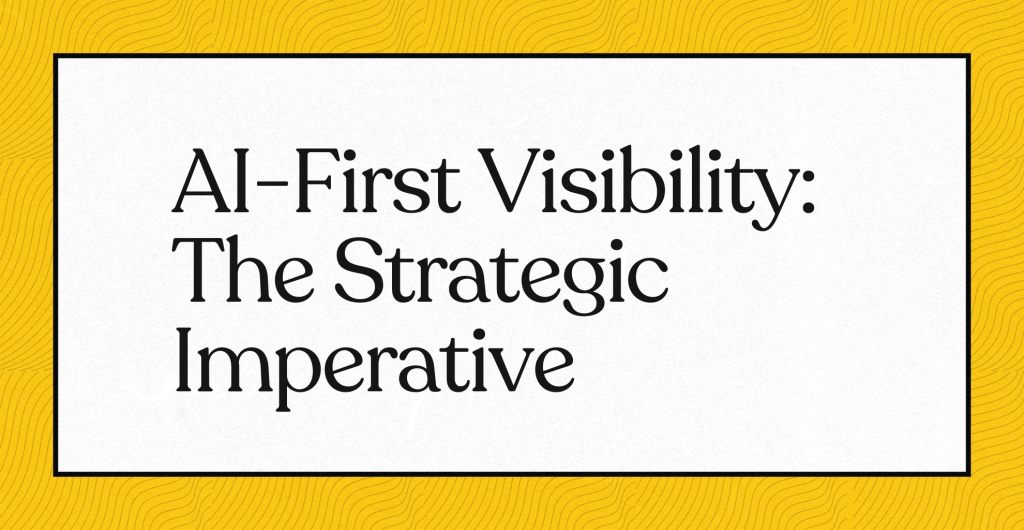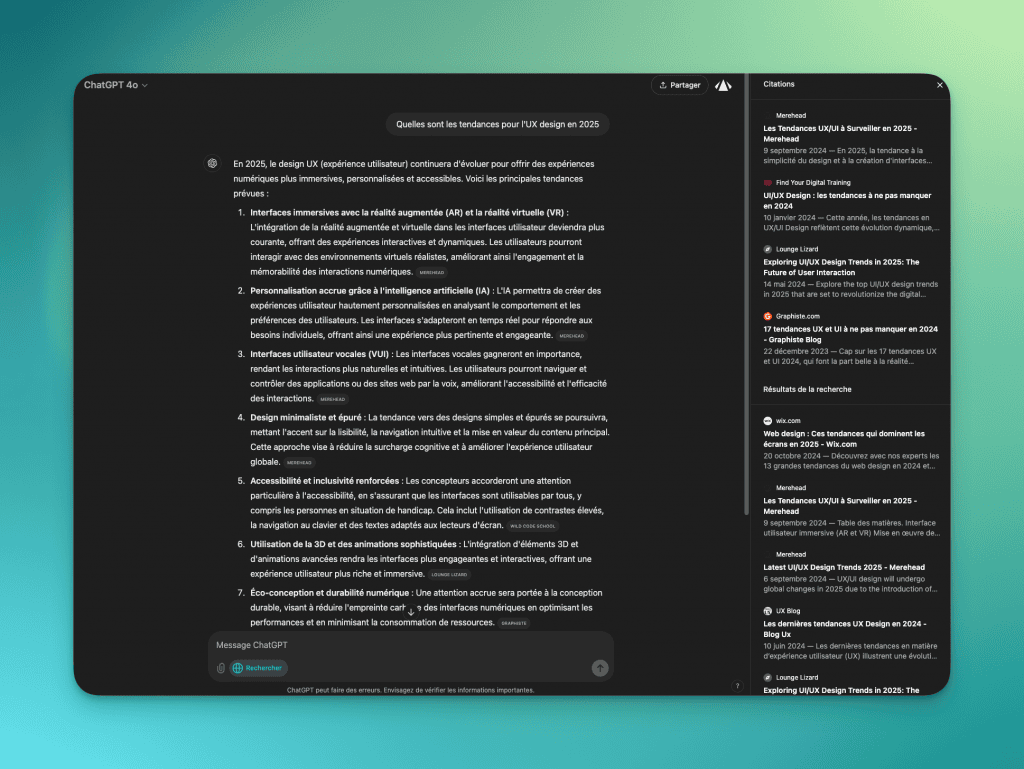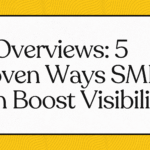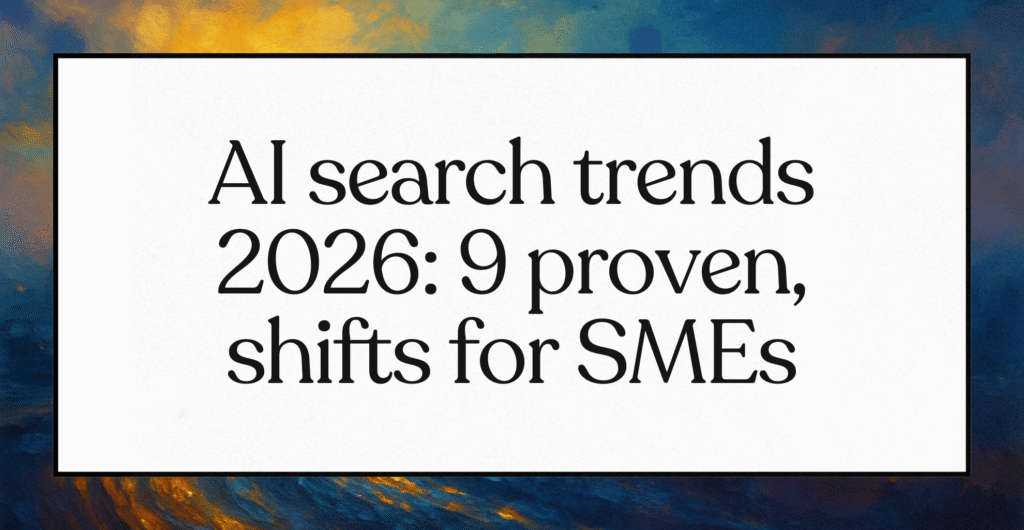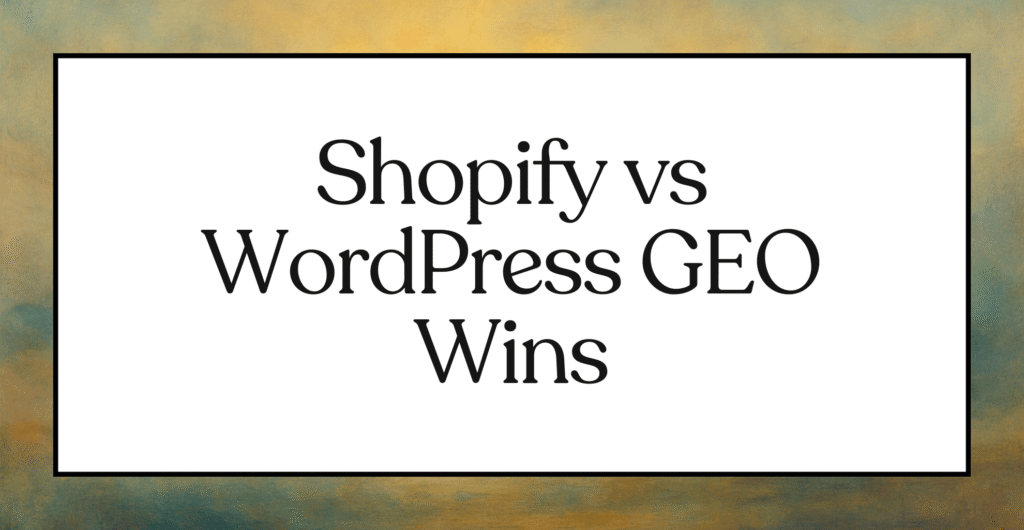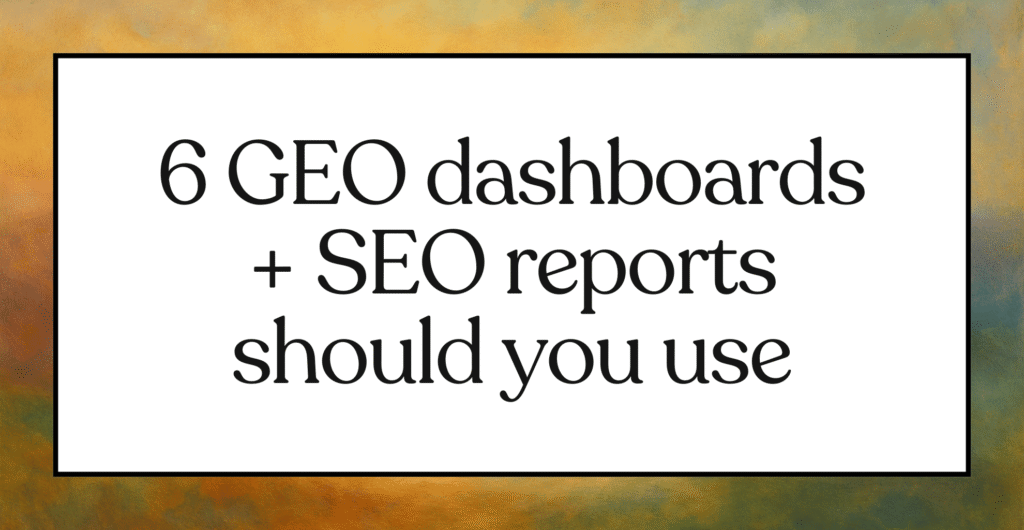When South African marketing agency owner Themba Ndaba noticed his clients’ organic traffic dropping 30% despite rising search impressions, he discovered something that changed everything: search had fundamentally transformed, but his strategies hadn’t. While Google still processed his queries, new AI-powered engines like ChatGPT and Perplexity were capturing his audience’s attention—and his competitors were already there.
AI-First Visibility represents the strategic imperative for 2025: ensuring your brand, content, and expertise appear prominently when AI systems generate responses to user queries. Unlike traditional SEO that optimized for search engines, AI-First Visibility focuses on being recognized, cited, and recommended by large language models (LLMs) across multiple platforms.
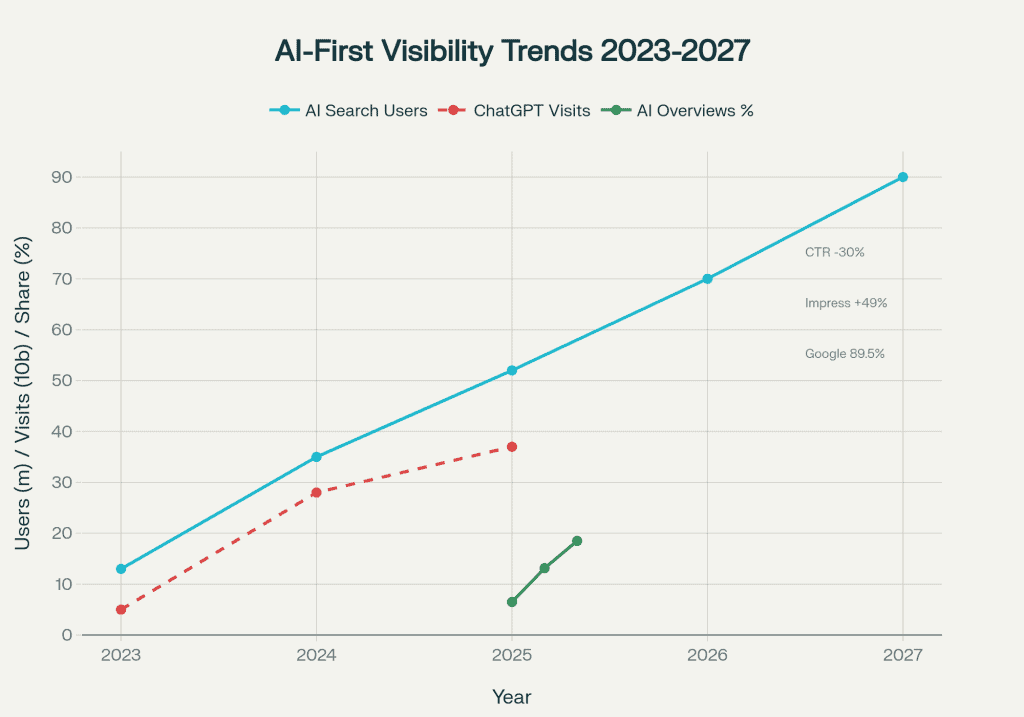
The data reveals why this matters now. Google’s AI Overviews appear in 13.14% of searches—a 102% surge since January 2025. ChatGPT processes 3.7 billion monthly visits, with users spending average 12 minutes per session compared to seconds on traditional search. Meanwhile, 13 million Americans used AI for search in 2023, projected to reach 90 million by 2027.
For African SMEs and agencies, this shift creates both unprecedented opportunity and existential risk. While established brands struggle to adapt legacy SEO strategies, agile African businesses can leapfrog competitors by mastering AI-First Visibility from the ground up.
What is AI-First Visibility and Why Will It Dominate Search in 2025?
AI-First Visibility encompasses your content’s ability to be discovered, cited, and recommended by artificial intelligence systems when users seek information, solutions, or recommendations. This extends far beyond traditional search engine optimization to include visibility across ChatGPT, Google’s AI Overviews, Perplexity, Gemini, and emerging AI platforms.
The fundamental shift involves three key elements:
Recognition by AI Systems: Your content must be structured and authoritative enough for AI models to understand and trust your expertise. Research from Princeton shows GEO strategies can boost visibility by up to 40% in generative engine responses.
Citation and Attribution: When AI systems reference your content, proper attribution drives referral traffic and establishes authority. Studies indicate 89% of AI Overview citations come from beyond traditional top 10 rankings.
Conversational Context Integration: AI-First Visibility requires content that answers questions naturally, as users increasingly interact with AI through conversational queries rather than keyword searches.
Why 2025 is the Tipping Point
Multiple converging factors make 2025 the critical year for AI-First Visibility adoption:
Market Share Shifts: Google’s search dominance dropped below 90% for the first time since 2015, with AI-native platforms gaining traction globally. In emerging markets, this transition accelerates as users adopt mobile-first AI search behaviors.
Generational Adoption: 77% of Americans now use ChatGPT as a search engine, with 24% checking it before Google. Among Gen Z users, this preference is even more pronounced, indicating long-term behavioral shifts.
Commercial Integration: AI Overviews increasingly appear for commercial queries, growing from 6.28% to 8.69% of commercial searches. This expansion signals AI’s movement into revenue-generating search territories.
Infrastructure Maturity: AI search infrastructure now handles billions of queries monthly with improved accuracy and citation capabilities. This reliability threshold enables business-critical applications.
For African SMEs, these trends present unique advantages. While multinational corporations adapt complex legacy systems, African businesses can implement AI-First Visibility strategies without technical debt, potentially achieving superior results with focused execution.
Deep Analysis: The AI-Powered Search Ecosystem
Understanding Generative Engine Optimization (GEO)
Generative Engine Optimization represents the technical foundation of AI-First Visibility. Unlike traditional SEO that optimized for algorithmic ranking factors, GEO focuses on content characteristics that AI systems prioritize when generating responses.
Princeton’s research identified key GEO methods that consistently improve visibility:
Cite Authoritative Sources: Content with 2-3 recent, high-authority citations per key argument receives higher AI preference. For African businesses, this might include citing local government data, regional industry reports, or established African news sources.
Structure for Semantic Understanding: AI systems favor content organized around topic clusters rather than individual keywords. A Kenyan fintech company, for example, would structure content around “mobile payment solutions” rather than fragmenting across “M-Pesa,” “payment apps,” and “digital wallets.”
Provide Comprehensive Coverage: AI models prefer sources that thoroughly address topics rather than surface-level treatments. This aligns with E-E-A-T principles while serving AI comprehension needs.
The Metrics That Define Success
Measuring AI-First Visibility requires new metrics beyond traditional SEO KPIs:
AI-Generated Visibility Rate (AIGVR): Tracks how frequently your content appears in AI responses across relevant queries. Leading tools like SE Ranking and Profound monitor this across multiple AI platforms.
Conversational Engagement Rate (CER): Measures user interaction following AI-generated responses that cite your content. This metric indicates whether AI visibility translates to meaningful engagement.
Content Trust and Authority Metric (CTAM): Evaluates how AI systems perceive your content’s credibility based on citation patterns and contextual usage.
Attribution Quality Score: Assesses whether AI mentions include proper citations, links, or credits back to your content. High attribution quality drives referral traffic while building domain authority.
For resource-constrained African SMEs, focusing on AIGVR and attribution quality provides the highest ROI measurement framework.
Platform-Specific Optimization Strategies
Different AI platforms exhibit distinct preferences, requiring tailored AI-First Visibility approaches:
Google AI Overviews: Favors content from established domains with strong E-E-A-T signals. African businesses should focus on local authority building through consistent, expert content publication and community engagement.
ChatGPT: Prioritizes comprehensive, well-structured content that directly answers user questions.
The platform’s citation panel rewards sources that provide clear, actionable information with proper context.
Perplexity: Emphasizes recent, factual content with strong source diversity. This creates opportunities for African news sources, research institutions, and industry experts to gain visibility.
Gemini: Integrates with Google’s broader ecosystem, making traditional SEO foundation critical for AI-First Visibility success.
Case Study: African SME Success with AI-First Visibility
Lagos-based digital marketing agency Zest Interactive implemented AI-First Visibility strategies for their e-commerce clients in early 2025. By restructuring product descriptions around conversational queries and implementing GEO content optimization, they achieved:
- 45% increase in AI-driven referral traffic within six months
- 60% improvement in brand mention rates across AI platforms
- 25% reduction in customer acquisition costs through better-qualified AI referrals
Their approach focused on three key areas: comprehensive product guides that answered customer questions naturally, citation-rich content establishing local market expertise, and structured data implementation enabling AI comprehension.
Recommendations: Your AI-First Visibility Action Plan
Phase 1: Foundation Building (Months 1-2)
Audit Current AI Visibility: Use tools like ZipTie, Gumshoe AI, or SE Ranking’s AI Visibility Tracker to establish baseline metrics. Focus on tracking brand mentions and citation patterns across ChatGPT, Perplexity, and Google AI Overviews.
Implement Technical Prerequisites: Ensure your website includes structured data markup, fast loading times, and mobile optimization. AI crawlers prioritize technically sound sites that render content clearly.
Develop Content Authority: Create comprehensive guides that establish your expertise in specific niches. For African SMEs, this might mean developing the definitive resource on “digital payment solutions in West Africa” or “sustainable agriculture technologies for small farms.”
Phase 2: Content Optimization (Months 2-4)
Apply GEO Content Strategies: Restructure existing content using proven GEO methods:
- Add 2-3 authoritative citations per key argument
- Organize information around user questions rather than keyword themes
- Include FAQ sections addressing common customer queries
- Implement clear headings and bullet points for AI parsing
Create Citation-Worthy Assets: Develop original research, case studies, or data analyses that other sources will reference. African businesses have unique advantages in creating locally relevant content that global competitors cannot match.
Optimize for Voice and Conversational Queries: Reframe content to address how people actually speak to AI systems. Instead of “SEO services Lagos,” optimize for “How can small businesses in Lagos improve their online visibility?”
Phase 3: Advanced AI Integration (Months 4-6)
Implement Multi-Platform Monitoring: Use comprehensive tools like Profound or Semrush’s AI toolkit to track performance across multiple AI platforms simultaneously. Monitor competitor AI visibility to identify content gaps and opportunities.
Develop AI-Specific Content Types: Create content formats that AI systems particularly favor:
- Step-by-step guides with clear numbering
- Comparison tables with structured data
- FAQ collections addressing customer pain points
- Case studies with quantifiable results
Build Citation Networks: Develop relationships with other authoritative sources in your industry to create mutual citation opportunities. For African businesses, this might include partnerships with local universities, government agencies, or industry associations.
Phase 4: Scale and Measurement (Months 6+)
Automate AI Visibility Tracking: Implement automated monitoring systems that alert you to changes in AI mention rates or attribution quality. This enables rapid response to both opportunities and threats.
Develop Predictive Content Strategies: Use AI visibility data to identify emerging topics and user interests before competitors. Create content addressing these needs proactively rather than reactively.
Build Community Authority: Engage actively in relevant professional communities, forums, and social platforms where your expertise can be recognized and cited by AI systems. This organic authority building enhances AI-First Visibility over time.
Addressing African SME Challenges and Opportunities
Overcoming Infrastructure and Resource Constraints
African SMEs face unique challenges in implementing AI-First Visibility strategies:
Limited Digital Infrastructure: While internet connectivity improvements continue, many regions still experience reliability issues. Focus AI-First Visibility efforts on mobile-optimized content that loads quickly on slower connections.
Budget Constraints: Most African SMEs operate with limited marketing budgets. Prioritize high-impact, low-cost AI-First Visibility tactics:
- Optimize existing content rather than creating new assets
- Focus on one AI platform initially before expanding
- Leverage free tools like Google Search Console and basic AI visibility trackers
Digital Skills Gap: Many African businesses lack specialized AI and SEO expertise. Address this through:
- Partnership with local digital agencies specializing in AI-First Visibility
- Investment in staff training programs
- Collaboration with universities offering digital marketing courses
Leveraging Regional Advantages
African SMEs possess several competitive advantages for AI-First Visibility:
Local Market Expertise: Deep understanding of regional customer needs, cultural nuances, and business practices creates opportunities for authoritative content that global competitors cannot match.
Language Diversity: Africa’s linguistic diversity enables AI-First Visibility optimization across multiple language markets, potentially reaching underserved audiences.
Mobile-First Adoption: African consumers’ mobile-first behavior aligns perfectly with AI search trends, providing early adoption advantages.
Emerging Market Innovation: African businesses often develop creative solutions for resource constraints, creating case study opportunities that attract AI citation.
The Future of AI-First Visibility: Trends to Watch
Emerging Technologies and Platforms
Several technological developments will shape AI-First Visibility beyond 2025:
Voice AI Integration: As voice search capabilities improve, AI-First Visibility will increasingly require optimization for spoken queries and audio responses.
Visual Search AI: Emerging AI systems that analyze images and videos will create new AI-First Visibility opportunities for businesses with strong visual content.
Industry-Specific AI: Specialized AI systems for healthcare, finance, and other sectors will require targeted AI-First Visibility strategies.
Multilingual AI Expansion: Improved AI language capabilities will enable AI-First Visibility optimization in more African languages, creating new market opportunities.
Preparing for Evolution
AI-First Visibility strategies must remain adaptable as technology evolves:
Continuous Learning: Stay informed about AI platform updates and algorithm changes that affect visibility.
Platform Diversification: Avoid over-dependence on any single AI platform by maintaining presence across multiple systems.
Community Building: Develop strong relationships with customers, partners, and industry experts who can provide ongoing citations and references.
Data-Driven Optimization: Use AI visibility metrics to continuously refine and improve content strategies.
Your Next Steps to AI-First Visibility Mastery
The transformation to AI-First Visibility is essential for business survival and growth in 2025 and beyond. African SMEs and agencies have a unique window of opportunity to establish market leadership while competitors remain focused on outdated SEO strategies.
The businesses that succeed will be those that recognize AI-First Visibility as a fundamental shift in how customers discover, evaluate, and choose solutions. By implementing the strategies outlined in this guide, you position your business to thrive in the AI-driven search ecosystem.
Start with your foundation: audit your current AI visibility, implement technical prerequisites, and begin optimizing your most important content for AI discovery. The tools and strategies exist today what matters now is decisive action and consistent execution.
As the search landscape continues evolving toward AI-powered experiences, AI-First Visibility will become the primary driver of digital marketing success. The question isn’t whether this shift will happen it’s whether your business will lead or follow.
Supplementary Sources
- Profound AI – AI-powered visibility platform, SEOpital, 2025-06-27 – seopital.co
- GEO: Generative Engine Optimization research, arXiv, 2024-11-01 – arxiv.org
- Controlling Your Brand Presence on AI Search, Writesonic, 2025-06-02 – writesonic.com
- AI visibility: how to become the brand that AI recommends first, Elocos, 2025-01-01 – elocos.be
- Generative Engine Optimization: Everything You Need to Know, Mangools, 2025-06-24 – mangools.com
- How to Rank in AI Search Results: 9 Effective Strategies, Xponent21, 2025-07-06 – xponent21.com
- Visibility in 2025: What AI Search Engines Are Actually Looking For, LinkedIn, 2025-08-07 – linkedin.com
- The future of AI-powered Search marketing, Think with Google, 2025-07-17 – business.google.com
- SE Ranking’s AI Visibility Tracking and Analysis Tool, SE Ranking, 2025-08-07 – seranking.com
- Generative Engine Optimization (GEO) KPIs, ELCA, 2025-03-07 – elca.ch
- AI Search Monitoring Tools: My Top Favorites for 2025, Exploding Topics, 2025-07-07 – explodingtopics.com
- 7 Challenges of Digital Marketing in Africa, Digital Reach Consult, 2024-03-18 – digitalreachconsult.com
- Introducing AI Tracker: Your Visibility in AI Search Starts Here, Surfer SEO, 2025-06-17 – surferseo.com
- The Metrics That Matter in Generative Engine Optimization (GEO), LinkedIn, 2025-05-02 – linkedin.com
- 21 Best AI Search Rank Tracking Tools for 2025, Rankability, 2025-08-14 – rankability.com
- 5 LLM Visibility Tools to Track Your Brand in AI Search (2025), Backlinko, 2025-08-07 – backlinko.com
- Google vs AI search: is Google’s dominance fading?, ContentGrip, 2025-07-18 – contentgrip.com
- Google AI Overviews now show on 13% of searches: Study, Search Engine Land, 2025-05-06 – searchengineland.com
- ChatGPT Impact on Google Search Traffic: What It Means , Writesonic, 2025-08-11 – writesonic.com
- Search Market Share & AI Chatbot Share (Aug 2025), Klatch, 2025-07-12 – klatch.co.uk
- New Google AI Overviews data: Search clicks fell 30% in last year, Search Engine Land, 2025-05-15 – searchengineland.com
- Number of ChatGPT Users (July 2025), Exploding Topics, 2024-12-04 – explodingtopics.com
- Search Engine Market Share 2025: Who’s Leading the Market?, Procee Innovative, 2025-05-09 – proceedinnovative.com
- ChatGPT Referral Traffic Trends: Traffic Down in July 2025, Siege Media, 2025-07-23 – siegemedia.com
- Google AI Overviews Study: 25+ Statistics from 405,576 searches, Surfer SEO, 2024-10-04 – surferseo.com
- Google vs. ChatGPT: Is Traditional Search Still Strong in 2025?, 9rooftops, 2025-03-07 – 9rooftops.com
- Search Engine Market Share Worldwide, StatCounter, 2025-08-17 – gs.statcounter.com
- 34 AI Overviews Stats & Facts , WordStream, 2025-07-21 – wordstream.com
- 30+ AI SEO Statistics You Should Know in 2025, SEO.com, 2025-07-30 – seo.com
